Singapore is known for its glimmering skyscrapers, well-groomed parks, iconic landmarks and modern shopping malls. But despite its modern façade and tiny size, the city state is not short of interesting stories and hidden gems, thanks to its multicultural population and a rich pre-colonial and colonial history that spans centuries.
Explore the Little Red Dot in a fresh way by embarking on some of the National Heritage Board’s (NHB) heritage trails (while maintaining social distancing guidelines). Each trail shows a neighbourhood in a different light, highlighting fascinating stories of the streets and the people who lived here. We’ve picked five of the best that show the diverse past of the island.
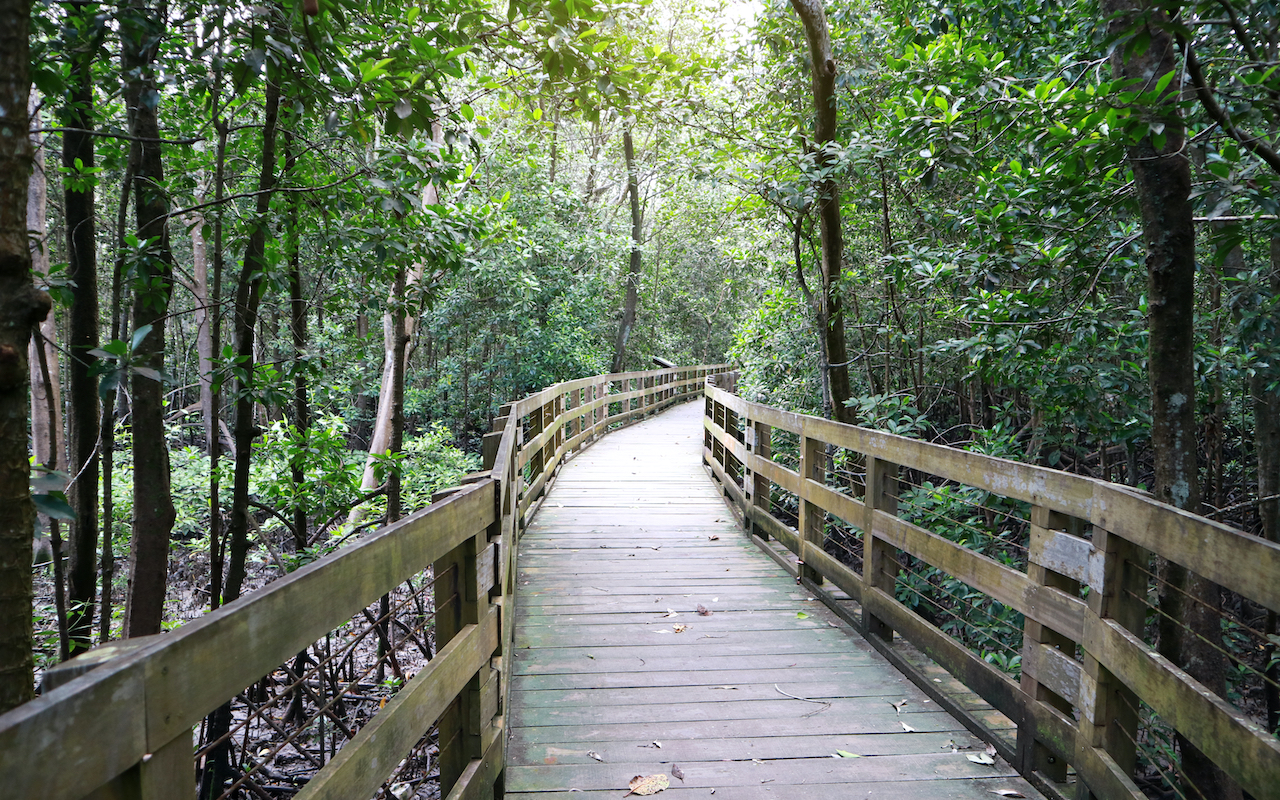
1. Pasir Ris Heritage Trail
This housing estate is synonymous with seaside activities and holiday stays in chalets, as well as family leisure attractions. In fact, it was a recreational hotspot since the 1800s and even used to be a private enclave for the British elite during the colonial era. The area was also once home to Golden Palace Holiday Resort, an 11-acre resort which featured a fishing and boating pond converted from a former sand quarry, and Villa Saujana, a two-acre dining and entertainment village.
On this trail, you have three routes to choose from: – Coastal Heritage (3.5km), Play @ Pasir Ris (4.5km) and Architectural Highlights (5.6km) – that combined take about three and a half hours to complete on foot. Landmarks include the Sakya Tenphel Ling, one of the first Tibetan Buddhist temples in Southeast Asia; the Masjid Al-Istighfar that’s inspired by inspired by Istanbul’s Blue Mosque; and Singapore’s only commercial saltwater fishing pond in Pasir Ris Town Park.
You can also discover the mangrove forest within Paris Ris Park (which also has an impressive three-storey bird-watching tower) and the green corridor alongside Sungei Api Api, which is flanked by residential estates and shows how natural and built environments can co-exist together.
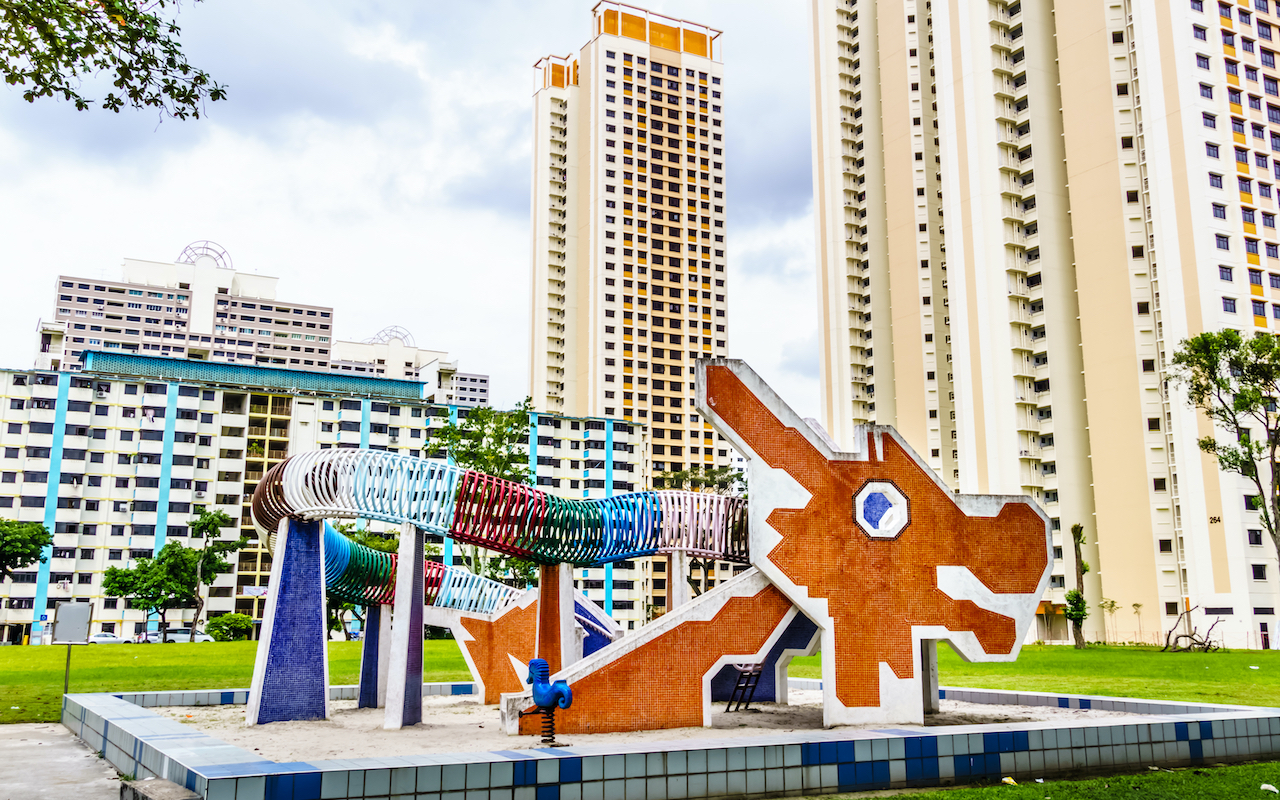
2. Toa Payoh Trail
This neighbourhood was the HDB’s first major town project, designed and developed entirely by the government body. As a result, Toa Payoh became a model for public housing in the 1960s. But this wasn’t its only mark on history; it’s also home to the first Mass Rapid Transit (MRT) station.
During the 1.3km trail, you’ll get a glimpse into what life was like for the villagers before these changes took place. Also find out how it came to be the HDB’s first housing project and what this historic era meant to the residents who moved into the estate. You’ll also visit Block 53, which has a unique Y-shaped design and is also known as ‘the VIP block’. Why? Because it has hosted both local and foreign dignitaries, the most famous being Queen Elizabeth II in 1972.
When Singapore hosted its first ever international sports event – the Southeast Asian Peninsular Games (SEAP Games) in 1973 – Toa Payoh was at the heart of the action. Its swimming complex, sports hall and stadium were used as competition and training venues and four housing blocks served as accommodation for the athletes. You’ll see them all on this trail.
Another highlight is the Toa Payoh Dragon Playground, which is one of two remaining playgrounds in Singapore with this design.
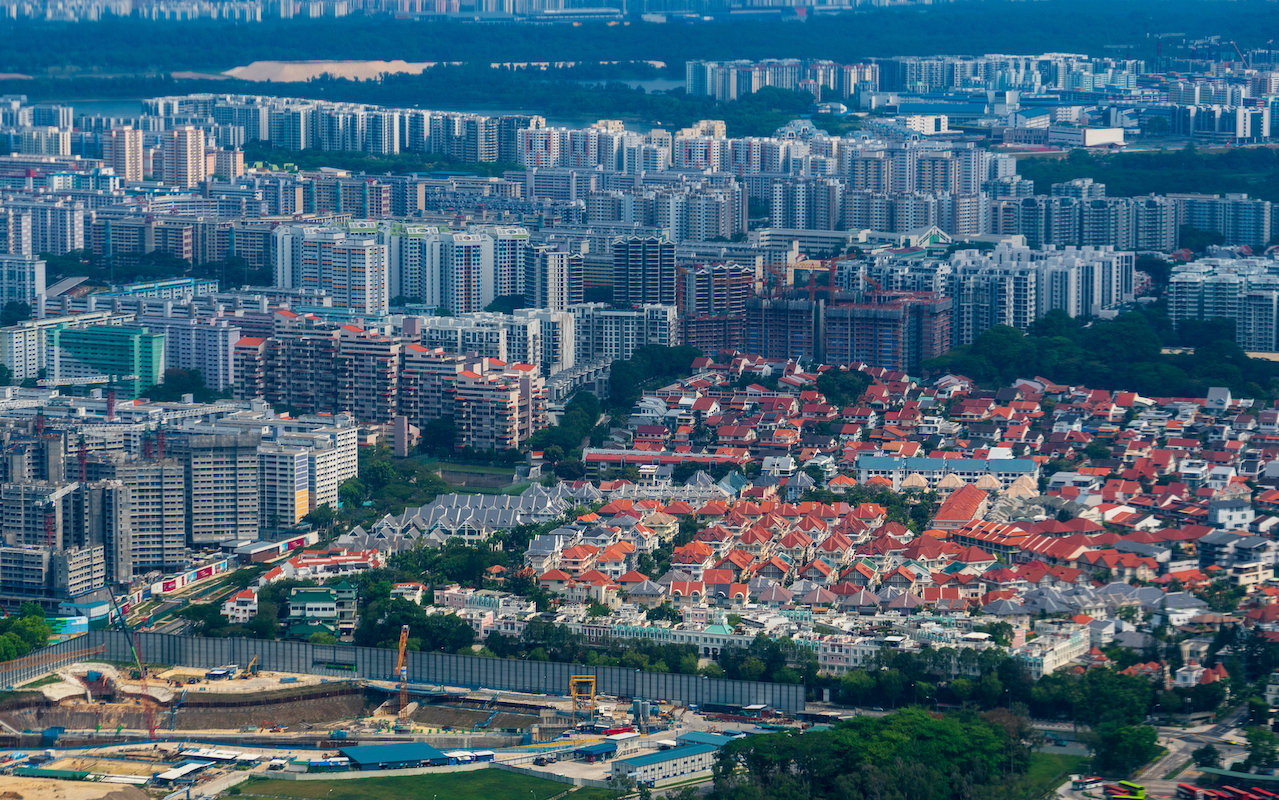
3. Bedok Heritage Trail
This 15km trail takes you through a large part of Singapore’s eastern coast, covering Bedok, Siglap, Tanah Merah and the East Coast areas. The waters along these shores have seen plenty of action over the centuries, including naval battles and piracy. In fact, an incident that took place in the Tanah Merah waters had huge maritime significance. The Portuguese ship Santa Catarina was captured by the Dutch here in February 1603 and this act of piracy led to the drafting of international laws, including the modern notion of international waters.
The kampongs here in the 1800s were mainly fishing settlements and the trail covers what it was like here both before and after the colonial era. Go behind the street names and find out about the people who inspired them. Spot old seawalls and learn about the East Coast Reclamation Scheme which literally changed the shape of Singapore. And get insights into the unique architecture in Singapore’s east, from Peranakan-style buildings to Art Deco houses.
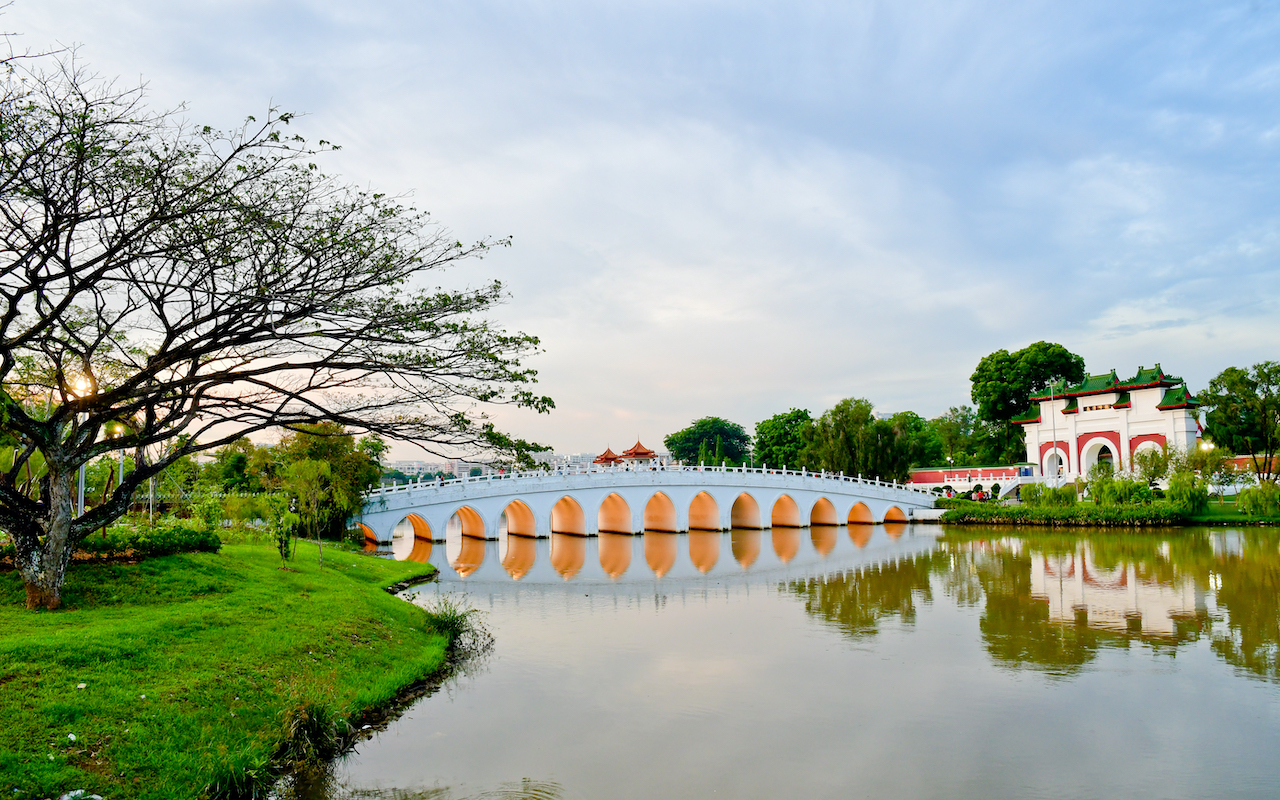
4. Jurong Heritage Trail
The neighbourhood of Jurong is where you’ll find Jurong Industrial Estate and Jurong Island, and it’s best identified with factories and shipyards. But far from being barren and boring, Jurong has an intriguing past.
In this trail, find out who were the earliest settlers in the Jurong area, how Jurong Island used to be a pirate hideout, where a spy and guerrilla training camp used to be in Jurong Port and the role that Jurong played in the fall of Singapore during World War II. History lovers: You may get a kick out of the fact that you can still travel along a remaining stretch of the old Jurong Road by entering from Bukit Batok Road or Jurong West Avenue 2.
The trail also takes you to the former Jurong drive-in cinema, the first and only open-air drive-in cinema in Singapore when it opened in 1971. And get a glimpse into Jurong’s brickworks industry, as well as the ‘dragon kilns’ – kilns that turned out pottery and had a dragon-like appearance.
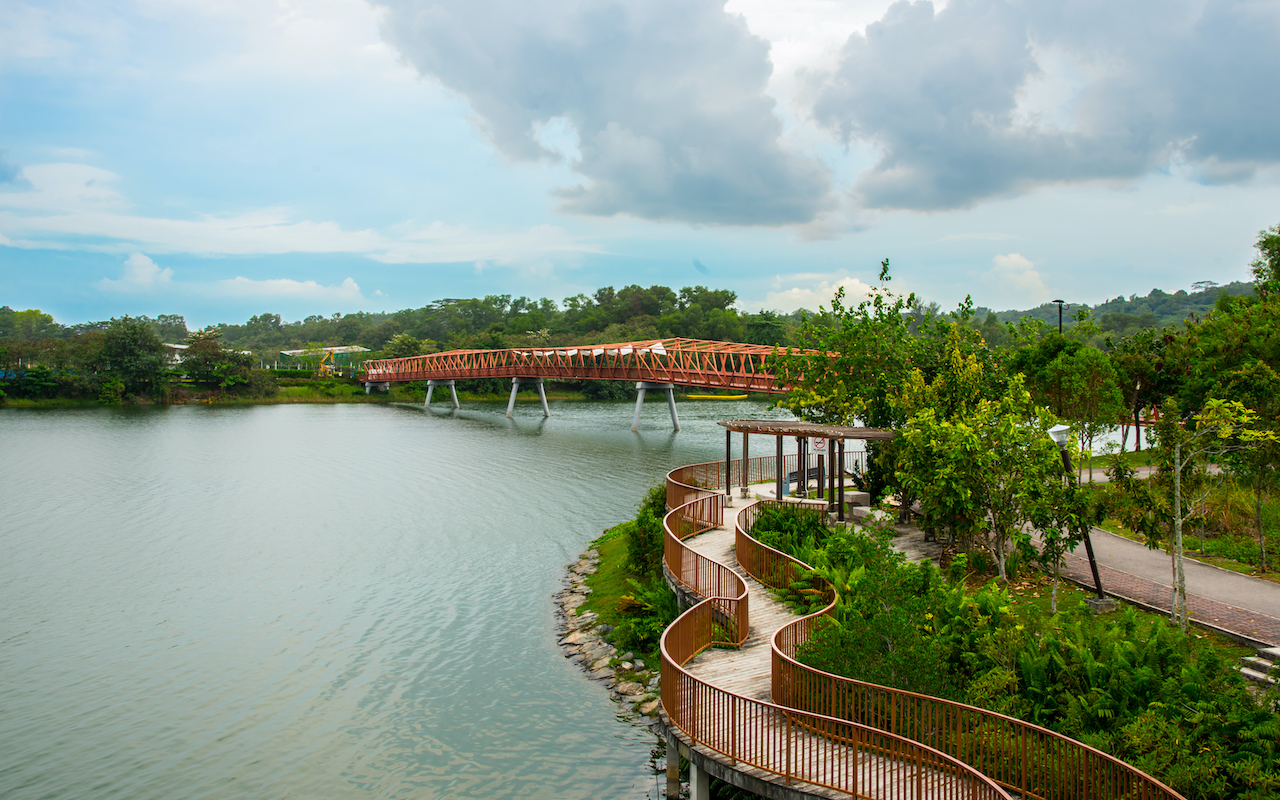
5. Tampines Heritage Trail
The neighbourhood of Tampines used to be a rural spot. It’s hard to imagine, but it once served as a hunting ground for tigers that would carry off calves from farms in the late 1800s. Wildlife roamed around its woods, and a panther was even spotted there in 1975. You can explore this eclectic eastern suburb – which was the first and only town to be conferred World Habitat Award in 1991 – in three ways. The Tampines Town Trail (4.7km) can be explored on foot and by bus, taking you through the public housing estate and exploring some town planning innovations. You’ll also see the facilities the locals enjoy, such as Our Tampines Hub and Tampines Round Market and Food Centre.
The Green Spaces Trail (6.5km) – a cycling trail – is a favourite with nature lovers. You’ll get to explore scenic landscapes such as a disused quarry, a former landfill turned wetland, and sites where former kampongs were once located. And the Religious Institutions Trail (8km), which you can explore on bus and foot, shows the diversity of the neighbourhood – and of Singapore. You’ll get to visit the various places of worship, some of which have been around for more than a century. Marvel at the unique architecture and learn about the practices that take place in these places of worship. Note that you should be dressed in appropriate attire.
For more information on these heritage trails and to download booklets, visit NHB’s Roots. For Covid-19 guidelines and operating hours, please check the respective websites.
SEE ALSO: How to take a New York vacation without leaving Singapore
The post 5 heritage trails to check out in Singapore appeared first on SilverKris.
from SilverKris
No comments:
Post a Comment